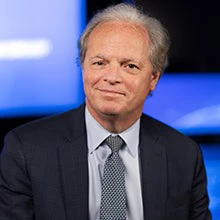I have some good and some not so good news about aid. First, the good news. The aid landscape has seen three important changes during the last decade that have had a transformative, positive effect on the very nature of aid.
One of these changes has been the increased focus on the quality of aid—especially on the results being achieved on the ground. The World Bank and IDA, the Bank’s fund for the poorest, have placed a premium on having a real impact in the work we support, and the results show.
The second change has been the substantial increase in the volume of aid, including massive debt relief to the world’s poorest and most indebted countries. Both increased aid volumes and debt relief have helped achieve much progress on several Millennium Development Goals (MDGs).
And third, support for developing countries is no longer purely OECD-centric, but is counting increasingly on middle-income countries to shore up the assistance.
Now for the not so good news. Progress on the MDGs is being made, but not enough. Results are being produced, but we can do better. And fragmentation of aid is still standing in the way of further progress. We still duplicate efforts, and donors still tend toward heavy earmarking of aid. The result is often poorer coordination and higher transaction costs for all, especially in the form of additional burdens on developing countries. These higher costs represent an unacceptable source of waste in an already fiscally stressed environment for many donor countries. We can do better.
Another fear is that the resource mobilization efforts of the past decade may not be sustained and actually are at risk of being reversed.
And while more and more middle-income countries are emerging as new development partners, we have yet to fully understand and exploit the potential of this partnership. We need a much more inclusive dialog that incorporates traditional and new development partners to find the best ways to work together to support lower-income countries. This dialog could benefit from mutual listening and learning, and sharing of information.
We at the World Bank have taken a couple of concrete steps to facilitate this engagement. For example, our new open development agenda makes freely available the Bank’s vast data and knowledge storehouse, allowing others to understand what we do and join the debate, ultimately improving our development approach and results. In fact, the World Bank (IBRD and IDA) was recently named the global aid transparency leader in Publish What You Fund’s Aid Transparency Index. IDA also placed in the top ten for all measures of aid effectiveness by the Center for Global Development’s new Aid Effectiveness Index.
At the same time, we’re taking action to build a global coalition that links traditional donors with new aid partners. A case in point is the latest round of the IDA replenishment, during which emerging partners jacked up their contributions while traditional donors stretched their giving despite fiscal stress.
The debate on aid effectiveness going this week in Busan needs to take a hard look at the changing aid architecture—the trends behind it, the challenges and the opportunities. That includes finding ways to strengthen this new type of coalition, which not only will shape the aid architecture of the future, but also holds the most promise for achieving lasting development results.
RELATED
- “Finance for Development: Trends and Opportunities in a Changing Landscape"— Working Paper | Brief
- Website: IDA, the World Bank’s Fund for the Poorest
- Website: AidFlows


Join the Conversation